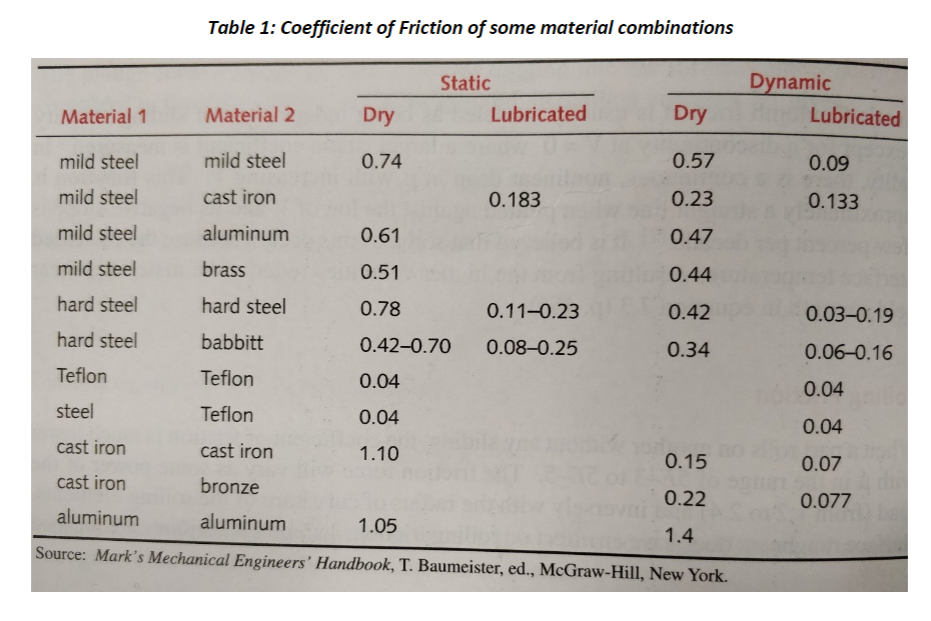Answered step by step
Verified Expert Solution
Question
1 Approved Answer
A steel surface consisting of conical asperities with a roughness angle of 10, reciprocates on a soft lead surface (H = 75 MPa) under


A steel surface consisting of conical asperities with a roughness angle of 10, reciprocates on a soft lead surface (H = 75 MPa) under a load of 1 N with a reciprocating amplitude of 10 mm at 5 Hz. Given that the volume of the lead material removed is 106 m in 10 hours, calculate the abrasive wear coefficient of the lead material. Given that the roughness angle of the steel surface is 30, calculate the wear coefficient of lead material. 2 Points Material 1 Table 1: Coefficient of Friction of some material combinations Material 2 mild steel cast iron aluminum brass hard steel babbitt Teflon Teflon cast iron bronze aluminum Dry 0.74 0.61 0.51 0.78 Static 0.42-0.70 0.04 0.04 1.10 mild steel mild steel mild steel mild steel hard steel hard steel Teflon steel cast iron 0.15 cast iron 0.22 aluminum 1.4 Source: Mark's Mechanical Engineers' Handbook, T. Baumeister, ed., McGraw-Hill, New York. 1.05 Lubricated 0.183 Dry 0.57 0.23 0.47 0.44 0.42 0.34 0.11-0.23 0.08-0.25 Dynamic Lubricated 0.09 0.133 0.03-0.19 0.06 0.16 0.04 0.04 0.07 0.077
Step by Step Solution
★★★★★
3.56 Rating (149 Votes )
There are 3 Steps involved in it
Step: 1

Get Instant Access to Expert-Tailored Solutions
See step-by-step solutions with expert insights and AI powered tools for academic success
Step: 2

Step: 3

Ace Your Homework with AI
Get the answers you need in no time with our AI-driven, step-by-step assistance
Get Started


